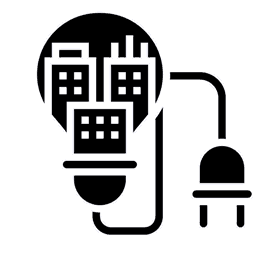 | Wind Energy Technologies
|
Modern wind turbines are divided into two major categories: horizontal axis turbines and vertical axis turbines. Old-fashioned windmills are still seen in many rural areas.
- Horizontal Axis Turbines (HAWT)
Horizontal axis turbines are the most common turbine configuration used today. They consist of a tall tower, atop which sits a fan-like rotor that faces into or away from the wind, the generator, the controller, and other components. Most horizontal axis turbines built today are two- or three-bladed, although some have fewer or more blades. - Vertical Axis Turbines (VAWT)
Vertical axis turbines fall into two major categories: Savonius and Darrieus. Neither turbine type is in wide use today.- Darrieus Turbines
- Savonius Turbines
First invented in Finland, the Savonius turbine is S-shaped if viewed from above. This drag-type VAWT turns relatively slowly, but yields a high torque. It is useful for grinding grain, pumping water, and many other tasks, but its slow rotational speeds are not good for generating electricity.
The Darrieus turbine was invented in France in the 1920s. Often described as looking like an eggbeater, this vertical axis turbine has vertical blades that rotate into and out of the wind. Using aerodynamic lift, these turbines can capture more energy than drag devices. The Giromill and cycloturbine are variants on the Darrieus turbine. - Windmills
Windmills have been used by humans since at least 200 B.C. for grinding grain and pumping water. By the 1900s, windmills were used on farms and ranches in the United States to pump water and, later, to produce electricity. Windmills have more blades than modern wind turbines, and they rely on drag to rotate the blades.
Source: Energy Efficiency and Renewable Energy, US Department of Energy
 |
Return to the Wind Energy pages Contact: Hari Srinivas - hsrinivas@gdrc.org |